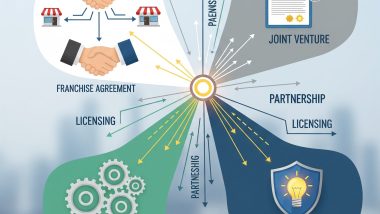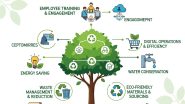Sales, at its core, is the process of exchanging goods, services, or ideas for value, usually monetary. It is a vital function in any business, as it directly impacts revenue and growth.
Successful sales not only involve transactions but also understanding customer needs, building relationships, and providing solutions that enhance customer satisfaction.
This article will discuss in depth the meaning of sales, origin of sales, and its types, and provide a quick guide to mastering the art of sales.
Meaning of Sales
The meaning of Sales is the activity of selling products or services to customers. It involves several steps, from identifying and engaging with potential customers (prospects) to negotiating terms and completing the deal. Sales can take place in various forms and channels, including face-to-face interactions, phone calls, emails, and online platforms. Effective sales practices are essential to business success, as they increase revenue and help build a loyal customer base.
Origin of Sales
The concept of selling has a rich history that spans across different cultures and time periods. The origins of selling can be traced back to ancient civilizations, where the exchange of goods and services was a fundamental aspect of daily life. Here is a brief overview of the evolution of selling:
Ancient Trade and Barter System
- Barter System:
Origin: The earliest form of selling probably began with the barter system, where people exchanged goods and services directly without a standardised medium of exchange. This system was prevalent in ancient societies such as Mesopotamia, Egypt, and the Indus Valley around 6000 BC.
Mechanism: Individuals traded excess goods they had in exchange for goods they needed. For example, a farmer could exchange grain for tools from a blacksmith.
- Introduction of Money: Origin: The invention of money in Mesopotamia around 3000 BC marked a significant shift in selling practices. Around 600 BC the Lydians are credited with creating the first coins, which facilitated easier and more standardized transactions. Effects: Money simplified trade, making it possible to set prices and conduct sales more efficiently. This allowed for the development of markets and trade networks.
Classical and Medieval Periods
- Markets and bazaars:
Origin: In ancient Greece and Rome, markets (agoras and forums) became central hubs for buying and selling goods. Similarly, fairs and bazaars emerged in medieval Europe, where merchants gathered to trade a variety of products.
Mechanism: These places provided a structured environment for sales, where merchants would display their goods, negotiate prices, and develop early sales techniques such as bargaining.
- Merchant trade:
Origin: During the medieval period, especially from the 10th to the 15th centuries, long-distance trade flourished. Merchants traveled across continents, bringing exotic goods from Asia, Africa, and the Middle East to Europe.
Impact: This period saw the rise of merchant guilds and the establishment of trade routes, which laid the foundation for modern sales practices and commerce.
Early Modern Period
- Industrial Revolution:
Origin: The Industrial Revolution changed sales dramatically in the 18th and 19th centuries. Mass production created a surplus of goods, necessitating the development of new sales techniques and retail stores.
Impact: The concepts of advertising, branding, and salesmanship emerged during this period. Sales roles became more specialised, focusing on persuading customers and making deals.
Modern Sales
- 20th Century to Present:
Evolution: The 20th century saw the professionalisation of sales with the development of formal sales training, methodologies, and tools. The advent of technology, particularly the Internet, revolutionised sales practices.
Impact: Modern sales strategies include digital marketing, data analytics, customer relationship management (CRM) systems, and e-commerce platforms. Sales techniques include consultative selling, solution selling, and challenger sales models.
Key Milestones in the Evolution of Sales
- The invention of currency facilitated standardised transactions.
- The development of markets and trade routes enabled widespread trade and exchange of goods.
- The Industrial Revolution introduced mass production and advertising, turning sales into a specialised profession. The digital age brought e-commerce, CRM, and advanced sales techniques, making sales more data-driven and customer-centric.
In short, the origins of sales are deeply rooted in human history, evolving from simple barter systems to the complex, technology-driven processes that drive modern commerce. Understanding this history provides valuable insight into the principles and practices that shape effective sales strategies today.
Types of Sales
Sales can be classified into several types based on the nature of the transaction, the sales process, and the relationship with the customer. Here are some of the common types of sales:
- Direct Sales:
This involves selling products or services directly to the consumer without any middlemen. This can be through door-to-door sales, personal meetings, or online platforms.
- Indirect Sales:
In this type, sales are made through intermediaries such as distributors, retailers, or resellers. The manufacturer sells to a middleman, who then sells to the end customer.
- Inside Sales:
These sales are made remotely, often over the phone or through online communication tools. Inside sales teams connect with potential customers and nurture leads without interacting face-to-face.
- Outside Sales:
Also known as field sales, this involves salespeople meeting potential customers and clients in person, often going to the customer’s location to close the deal.
- Consultative Selling:
This approach focuses on understanding the customer's needs and providing tailored solutions. Salespeople act as consultants, helping customers identify the best products or services to solve their problems.
- Transactional Sales:
These are typically one-time sales in which the focus is on closing the deal quickly. The relationship with the customer is often short-term and value-driven.
- Solution Selling:
This type involves selling a combination of products and services as a comprehensive solution to the customer's problem. It requires a deep understanding of the customer's business and challenges.
- Enterprise Sales:
Also known as complex or B2B sales, this involves large-scale transactions between businesses. The sales process is typically lengthy and involves multiple stakeholders and decision-makers.
A Quick Guide to Sales
To excel in sales, one must master a variety of techniques and strategies. Here are some insights from famous sales books to help you get started:
1. Understanding the Customer's Needs (SPIN Selling by Neil Rackham)
- Use the SPIN technique: situation, problem, implication, need-payoff.
- Ask questions that uncover the customer's needs and pain points.
- Focus on how your product or service can provide value and solve their problems.
2. Challenge the Customer (Challenger Selling by Matthew Dixon and Brent Adamson)
- Adopt the Challenger Sales model: teach, customise, and take control.
- Educate your customers and provide unique insights that challenge their thinking.
- Customise your approach to each customer and confidently lead the sales process.
3. Building Relationships (How to Win Friends and Influence People by Dale Carnegie)
- Develop strong interpersonal skills to build trust and rapport with customers.
- Show genuine interest in your customers and listen actively.
- Use positive reinforcement and empathy to influence and persuade.
4. Telling stories (Sell with a Story by Paul Smith)
- Use storytelling to connect with customers on an emotional level.
- Create compelling narratives that illustrate the benefits of your product or service.
- Share success stories and testimonials to build credibility and trust.
5. Prospecting (New Sales. Simplified. by Mike Weinberg)
- Focus on active prospecting to identify and engage potential customers.
- Use a mix of phone calls, emails, and social media to reach out to potential customers.
- Keep your pipeline filled by constantly generating new leads.
6. Psychological insights (The Psychology of Selling by Brian Tracy)
- Understand the psychological factors that influence purchase decisions.
- Build confidence and maintain a positive attitude.
- Use techniques to create readiness and motivation to buy in customers.
7. Persuasion (To Sell is Human by Daniel H. Pink)
- Recognise that everyone is in sales in some capacity.
- Focus on coherence, brevity, and clarity to effectively persuade others.
- Use improvisational techniques to adapt to different sales situations.
- Principles of Sales Greatness (The Little Red Book of Sales by Jeffrey Gitomer).
- Follow key principles such as being passionate, assertive, and prepared.
- Focus on providing value and building long-term relationships.
- Embrace a positive mindset and continuous learning.
9. Pitching (Pitch Anything by Oren Klaff)
- Use a strong method: setting the frame, telling the story, revealing the intrigue, offering the prize, capturing the hook point, and making the decision.
- Grab and retain your audience's attention.
- Effectively manage the sales meeting to close the deal.
10. Hardcore Prospecting (Hardcore Prospecting by Jeb Blount)
- Emphasis the importance of constant prospecting to avoid an empty pipeline.
- Leverage multiple channels such as social selling, phone, email, and cold calling.
- Maintain a disciplined approach to constantly generating new opportunities.
By incorporating these strategies and techniques, you can enhance your sales skills and achieve greater success in your sales efforts. Remember, sales isn't just about closing the deal; it's about understanding and meeting customer needs, building lasting relationships, and constantly improving your approach.



















